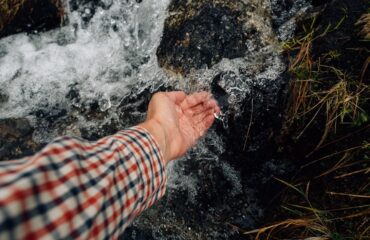The majority of people know relatively little about freshwater, despite the fact that it is necessary for human life and survival. In fact, compared to studying the purchase of drinking water, the majority of individuals will spend a lot more time researching the purchase of a new TV.
Purchasing bottled water is the standard response to complaints about the flavor or quality of tap water. The issue is that there is frequently no scientific proof that bottled water is superior.
Based mainly on anecdotal evidence, 600m families worldwide now choose bottled water over tap water every day.
Why ought we to consume tap water?
Most families had to fetch water from a nearby well and carry it inside only a little over a century ago. It was cumbersome, time-consuming, and uncomfortable. There was suddenly nearly unlimited access to clean water at home from the faucet after tap water was installed in every home. In general, tap water was inexpensive, practical, and secure.
In various nations, the percentage of the population who now drink bottled water instead of tap water has increased over the previous 40 years from 40 to 50 percent. Numerous millions of people are once again hauling water home. In general, tap water quality in North America and Europe improved throughout this time rather than declined call-tracking.org.
Bottled water is not only inconvenient but also 100–1000 times more expensive than tap water and terrible for the environment. Even worse, it isn’t any safer or healthier than regular tap water. In fact, tap water contains more minerals than bottled water in the majority of hard water areas.
Where is the source of the tap water?
Fresh water makes up 3% of the planet’s water reserves, but just 0.4% of it can be used as drinking water. Fresh surface water from places like lakes, rivers, and springs is the most typical source. Around 80% of the water used worldwide is consumed in this way. The next is groundwater, which includes aquifers. Groundwater makes about 98% of the world’s fresh water supply and is 60 times more abundant than surface water. Despite this, over usage of ground water in densely populated regions is making it an increasingly limited resource. Desalinated seawater, which is available in practically infinite quantities but is expensive due to the quantity of energy required, comes in third but certainly not last.
While not the only issue, the quality of the water supply is crucial for good tap water. Modern water treatment techniques can transform contaminated and polluted water into pure, clean tap water. International standards state that more than 99% of the public tap water in Europe and North America is clean and suitable for human consumption.
Why then, if the water in the tap is good, do we need a water filter?
The idea that drinking tap water poses a health risk is persistent. We are aware that this notion is untrue, at least in the majority of Europe, the US, and Canada. Before you use the tap water, it has already undergone substantial filtration and treatment by your community’s water provider.
Even if tap water is safe, water filters aren’t just for paranoid people. Due to the chlorine and minerals in the water, the tap water may taste terrible. Drinking tap water after it has been cleaned with chemicals could be harmful. After water has been treated, it is possible for bacteria and other organisms to enter. Water may wash away metal shavings or silt if your pipes are old or damaged, which will then enter your water supply.
For individuals who want to ensure the safety of their water, water filters can offer better-tasting tap water and a “final line of protection.” It is crucial to comprehend how water filters function for this reason.

What are the most typical tap water problems?
The majority of tap water in affluent countries is safe, but not all of it. Due to improper management of urban, industrial, and agricultural wastewater, hundreds of millions of people’s drinking water is hazardably contaminated or chemically poisoned.
The following contaminants could be found in source water:
- Viral and bacterial pollutants that can arise from sewage treatment facilities, septic systems, animal operations in agriculture, and wildlife.
- Inorganic pollutants, such salts and metals, that can occur naturally or be brought on by urban stormwater runoff, industrial or household wastewater discharges, the production of oil and gas, mining, or agriculture.
- Pesticides and herbicides can be used in a variety of ways, including in home settings, urban stormwater runoff, and agriculture.
- Synthetic and volatile organic compounds, which are waste products from industrial processes and the manufacturing of petroleum, can also be found in gas stations, urban stormwater runoff, and septic systems.
- Radioactive pollutants, which can develop naturally or as a result of mining and oil and gas extraction.
How can I tell if the water I drink from the tap is safe?
Governments or international standards are frequently used to determine the requirements for drinking water quality. Depending on the intended use of the water, these guidelines often contain minimum and maximum quantities of pollutants.
It is always preferable to first request the most recent water quality report from the water provider if you have access to public tap water. Larger water utilities conduct tens of thousands of tests annually and publish the results on their websites. Some do it yearly and demand that you seek the document. However, as we’ve shown above, public water companies don’t test for everything, so your tap water still can include microplastics or PFAS.
There are two ways to test yourself:
- Self-testing kits: These often include test strips for detecting bacteria, lead, pesticides, nitrites/nitrates, chlorine, hardness, and pH. The First Alert WT1 Drinking Water Test Kit or Complete Water Analysis Test Kit (around $30) is one illustration of this.
- Water labs – Send a sample of your water there for a thorough analysis of its composition. Again, it won’t tell you everything (microplastics and PFAS are excluded), but it will provide a decent sense of the level of quality.
What about water in bottles?
There is no scientific proof that bottled water is more hygienic or secure than unfiltered or tap water. Read our in-depth analysis comparing bottled water to filtered and tap water.
Is a water filter necessary?
Like a lot of people, you’re worried about getting the impurities out of your tap water. But what exactly is water filtration or purification, and does it actually work?
Removing undesired chemicals, biological contaminants, suspended particles, and gases are all steps in the purification process. The objective is to create water that is suitable for specific uses, such human consumption (drinking water). Some of the approaches include physical processes such as filtration as well as distillation and settling, biological processes such as slow sand filters or bioactive carbon. Chemical processes: chlorination and flocculation, as well as the use of electromagnetic radiation, – ultraviolet light.
How do water filters function?
The technology used in filters come in numerous varieties. The following are the most typical, and there are extra data on their operation available:
- The most effective material now available for water filters, activated carbon (often in the form of Granular Activated Carbon or Carbon Blocks) removes over 70 common pollutants while preserving vital minerals. Study up on activated carbon.
- Reverse osmosis (RO): Very efficient at getting rid of the majority of impurities that activated carbon can’t, but it also gets rid of all good minerals. Activated Carbon and other types of filters, including IX, are always paired with RO. Study up on reverse osmosis.
- Ion Exchange (IX): Highly effective in reducing scale by removing the hardness from tap water. Based on their ionic charges, IX targets particular compounds for removal while leaving desirable or harmless minerals in solution.
- The oldest method of water purification is probably distillation. Initially, the water is heated to a boil. When the temperature of a condenser is lowered by cooling water, the rising water vapor is condensed, collected, and stored. The liquid phase vessel retains the majority of pollutants. Usually, distilled water has a bad flavor.
- UV water filters: These devices effectively eliminate 99.9% of waterborne microbes. It must be coupled with another substance, such as activated carbon, because it does not remove other typical pollutants.
Which water filter ought I to pick?
Your tap water’s source is a key factor in this. A high-quality activated carbon water filter is typically more than adequate for public tap water in Europe and North America. In some parts of the world, a combination of RO, IX, or UV filters may be necessary to completely remove all toxins from well water or public tap water.
Which water filter is the best for DIY installation?
In order to determine which filter will work best for you, we tested and compared the most popular carafe/pitcher and faucet water filters across seven distinct criteria, including total cost of ownership. Discover which filter performed the best.
Why do I need to replace the filters, and how frequently?
If you’re not going to change the filters frequently, don’t even bother buying one. Water passes through a detachable cartridge that is packed with a filtering material, like activated charcoal, in all filtering systems. Filters may develop germs, clog, and lose their effectiveness. Follow the manufacturer’s advice on how frequently to change them.
Conclusion
At the end, as promised, we’ll provide a summary of the key points regarding how water filters function. Here it is:
- Drink Although water quality varies greatly depending on where you live, public tap water in North America and Europe is often safe to drink.
- Water Filters are wonderful for enhancing flavor and removing impurities, which lowers the risk of drinking contaminated tap water.
- Bottled water is awful for the environment and is NOT healthier than tap or filtered water.
- The finest water filter for public tap water in Europe and North America is often an activated carbon faucet filter like the TAPP 2 or a water pitcher. Other filters could be required for well water or tainted city water.
- Make careful to follow the manufacturer’s directions when changing your filters. Otherwise, you risk having tap water that is dirtier than when you started.







